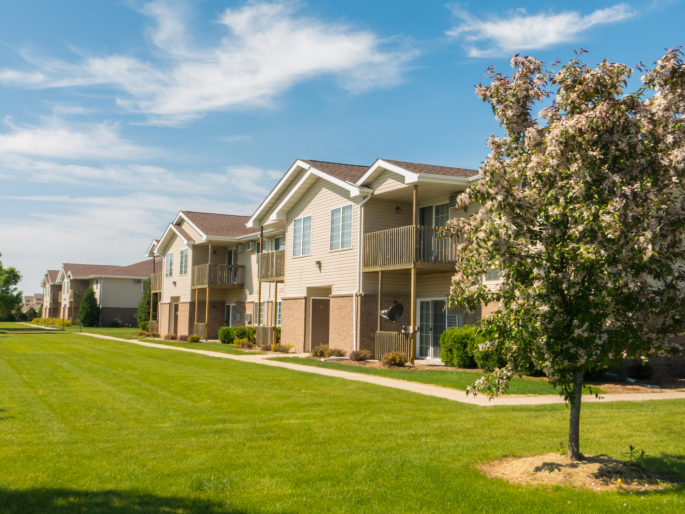 Last week’s economic reporting included the National Association of Home Builders Housing Market Index, government readings on housing starts and building permits, and data on sales of previously-owned homes. Weekly readings on mortgage rates and jobless claims were also released.
Last week’s economic reporting included the National Association of Home Builders Housing Market Index, government readings on housing starts and building permits, and data on sales of previously-owned homes. Weekly readings on mortgage rates and jobless claims were also released.
NAHB: Builder Confidence in Housing Market Conditions Slips by Two Points
Homebuilder confidence fell by two points to an index reading of 77 in April and was the lowest reading since September. Analysts expected this dip as mortgage rates and building materials costs continued to rise. Index readings over 50 indicate that most builders have positive views of housing market conditions. Index readings haven’t fallen below 50 since the beginning of the pandemic in April and May of 2020.
Robert Dietz, the chief economist for the NAHB, said: “The housing market faces an inflection point as an unexpectedly quick rise in interest rates, rising home prices, and escalating materials costs have significantly decreased housing affordability conditions, particularly in the crucial entry-level market.”
Analysts viewed the combined impact of rising home prices and mortgage rates as obstacles to affordability that would disproportionately affect first-time and moderate-income homebuyers.
Building permits held steady in March with 1.87 million permits issued at a seasonally-adjusted annual pace; analysts expected a reading of 1.82 million building permits issued. Likewise, housing starts were unchanged in March from February’s seasonally-adjusted annual pace of 1.79 million housing starts. Analysts predicted a reading of 1.73 million housing starts.
The National Association of Realtors® reported a slower pace of sales for previously-owned homes in March.5.77 million pre-owned homes were sold on a seasonally-adjusted annual pace as compared to a seasonally adjusted annual pace of 5.93 million previously-owned homes sold in February. Rising mortgage rates and home prices sidelined some first-time and moderate-income buyers and caused sales of previously-owned homes to fall.
Mortgage Rates Rise, Jobless Claims Fall
Freddie Mac reported that the average rate for 30-year fixed-rate mortgages surpassed five percent last week at 5.11 percent. The average rate for 15-year fixed-rate mortgages rose by 21 basis points to 4.38 percent. Rates for 5/1 adjustable rate mortgages rose by six basis points on average to 3.75 percent. Discount points averaged 0.80 percent for fixed-rate mortgages and 0.30 percent for 5/1 adjustable rate mortgages.
Initial jobless claims fell last week with 184,000 first-time claims filed as compared to 186,000 initial claims filed in the previous week. Continuing jobless claims were also lower with 1.42 million claims filed last week as compared to the prior week’s reading of 1.45 million continuing jobless claims filed.
What’s Ahead
This week’s scheduled economic reports include readings on home prices, new and pending home sales, and reports on inflation and consumer sentiment. Weekly readings on mortgage rates and jobless claims will also be published.
 U.S home prices grew at a near-record pace in January according to the National S&P Case-Shiller Home Price Index; year-over-year home prices rose by 19.20 percent in January as compared to December’s reading of 18.90 percent. Home prices rose 1.80 percent on a month-to-month basis from December to January.
U.S home prices grew at a near-record pace in January according to the National S&P Case-Shiller Home Price Index; year-over-year home prices rose by 19.20 percent in January as compared to December’s reading of 18.90 percent. Home prices rose 1.80 percent on a month-to-month basis from December to January. Last week’s economic reporting included readings on housing markets from the National Association of Home Builders, sales of previously-owned homes, and government reports on housing starts and building permits issued. Weekly readings on mortgage rates and jobless claims were also released.
Last week’s economic reporting included readings on housing markets from the National Association of Home Builders, sales of previously-owned homes, and government reports on housing starts and building permits issued. Weekly readings on mortgage rates and jobless claims were also released. Last week’s economic reporting included readings on home prices from S&P Case-Shiller and the Federal Housing Finance Agency; data on pending home sales and sales of new homes were also released. The University of Michigan released its final February reading on consumer sentiment and weekly reports on average mortgage rates and jobless claims were also published.
Last week’s economic reporting included readings on home prices from S&P Case-Shiller and the Federal Housing Finance Agency; data on pending home sales and sales of new homes were also released. The University of Michigan released its final February reading on consumer sentiment and weekly reports on average mortgage rates and jobless claims were also published. While U.S. home prices grew at record speed in December, rising mortgage rates threatened rapid price appreciation as buyers were sidelined by affordability concerns. S&P Case-Shiller’s National Home Price Index reported 18.80 percent year-over-year home price growth in December.
While U.S. home prices grew at record speed in December, rising mortgage rates threatened rapid price appreciation as buyers were sidelined by affordability concerns. S&P Case-Shiller’s National Home Price Index reported 18.80 percent year-over-year home price growth in December.